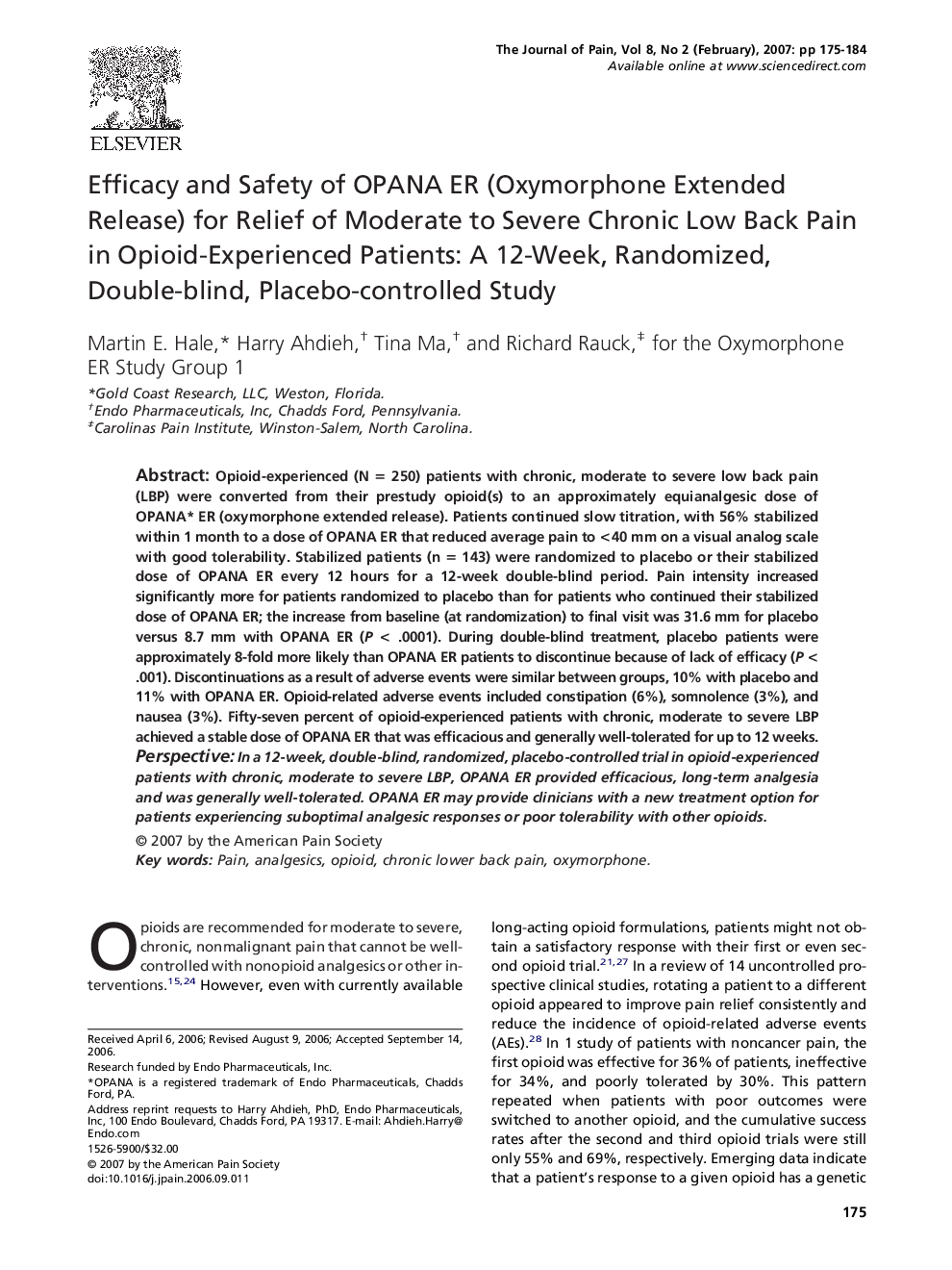| Article ID | Journal | Published Year | Pages | File Type |
|---|---|---|---|---|
| 2729415 | The Journal of Pain | 2007 | 10 Pages |
Opioid-experienced (N = 250) patients with chronic, moderate to severe low back pain (LBP) were converted from their prestudy opioid(s) to an approximately equianalgesic dose of OPANA⁎ ER (oxymorphone extended release). Patients continued slow titration, with 56% stabilized within 1 month to a dose of OPANA ER that reduced average pain to <40 mm on a visual analog scale with good tolerability. Stabilized patients (n = 143) were randomized to placebo or their stabilized dose of OPANA ER every 12 hours for a 12-week double-blind period. Pain intensity increased significantly more for patients randomized to placebo than for patients who continued their stabilized dose of OPANA ER; the increase from baseline (at randomization) to final visit was 31.6 mm for placebo versus 8.7 mm with OPANA ER (P < .0001). During double-blind treatment, placebo patients were approximately 8-fold more likely than OPANA ER patients to discontinue because of lack of efficacy (P < .001). Discontinuations as a result of adverse events were similar between groups, 10% with placebo and 11% with OPANA ER. Opioid-related adverse events included constipation (6%), somnolence (3%), and nausea (3%). Fifty-seven percent of opioid-experienced patients with chronic, moderate to severe LBP achieved a stable dose of OPANA ER that was efficacious and generally well-tolerated for up to 12 weeks.PerspectiveIn a 12-week, double-blind, randomized, placebo-controlled trial in opioid-experienced patients with chronic, moderate to severe LBP, OPANA ER provided efficacious, long-term analgesia and was generally well-tolerated. OPANA ER may provide clinicians with a new treatment option for patients experiencing suboptimal analgesic responses or poor tolerability with other opioids.
